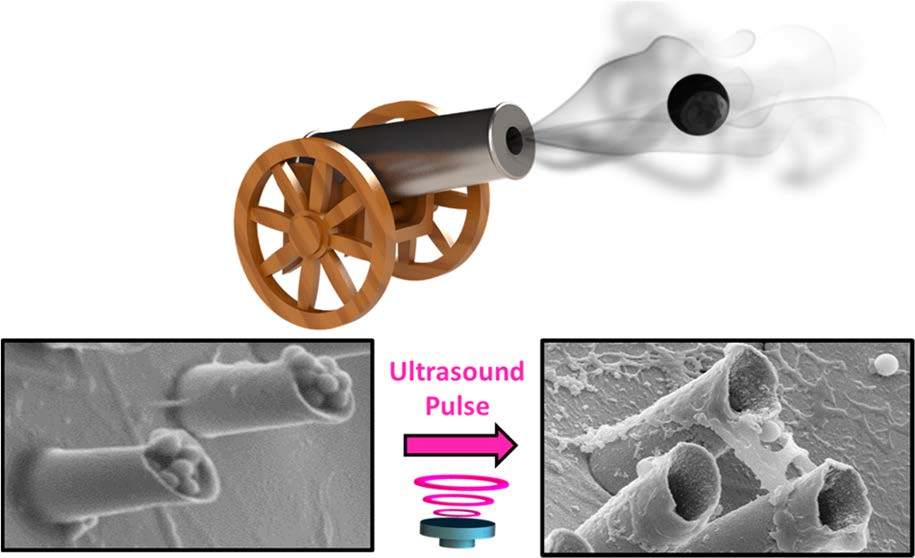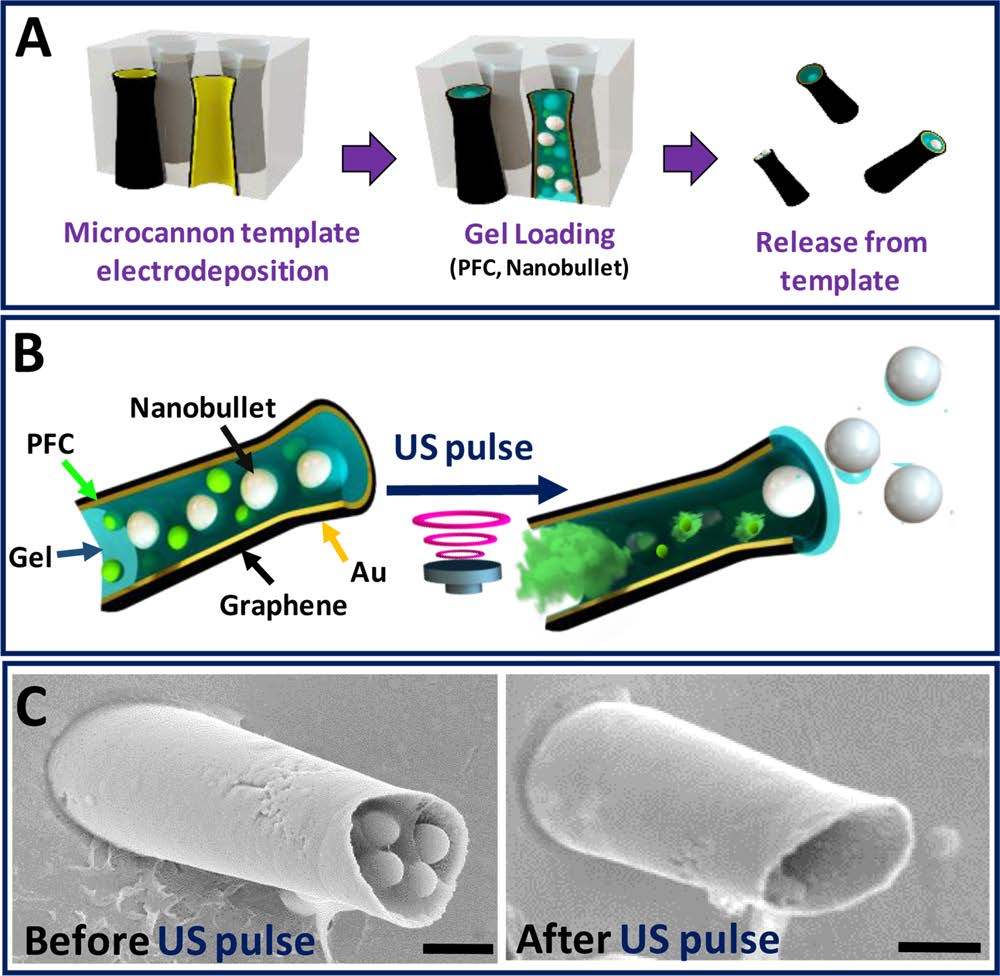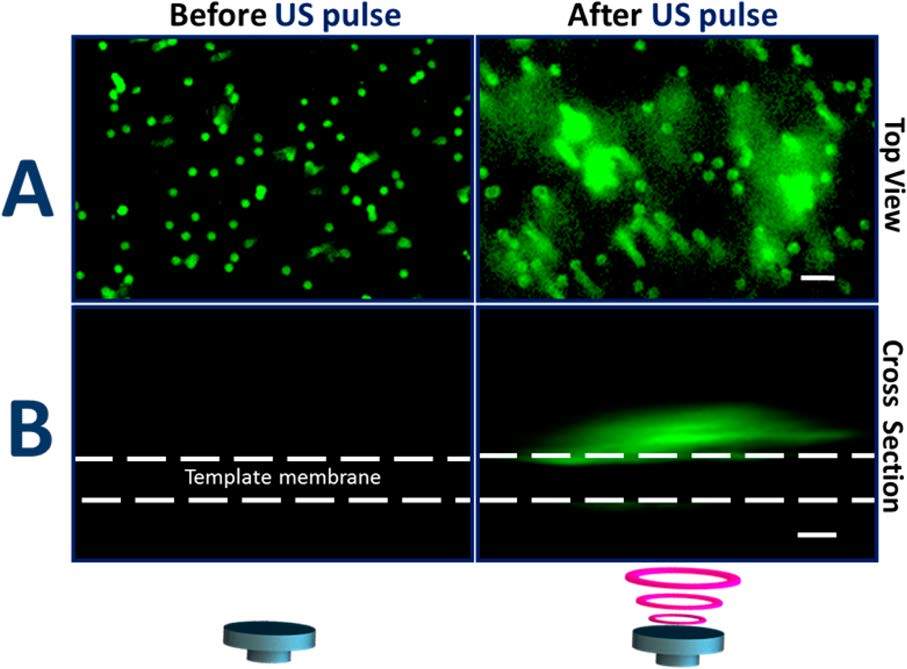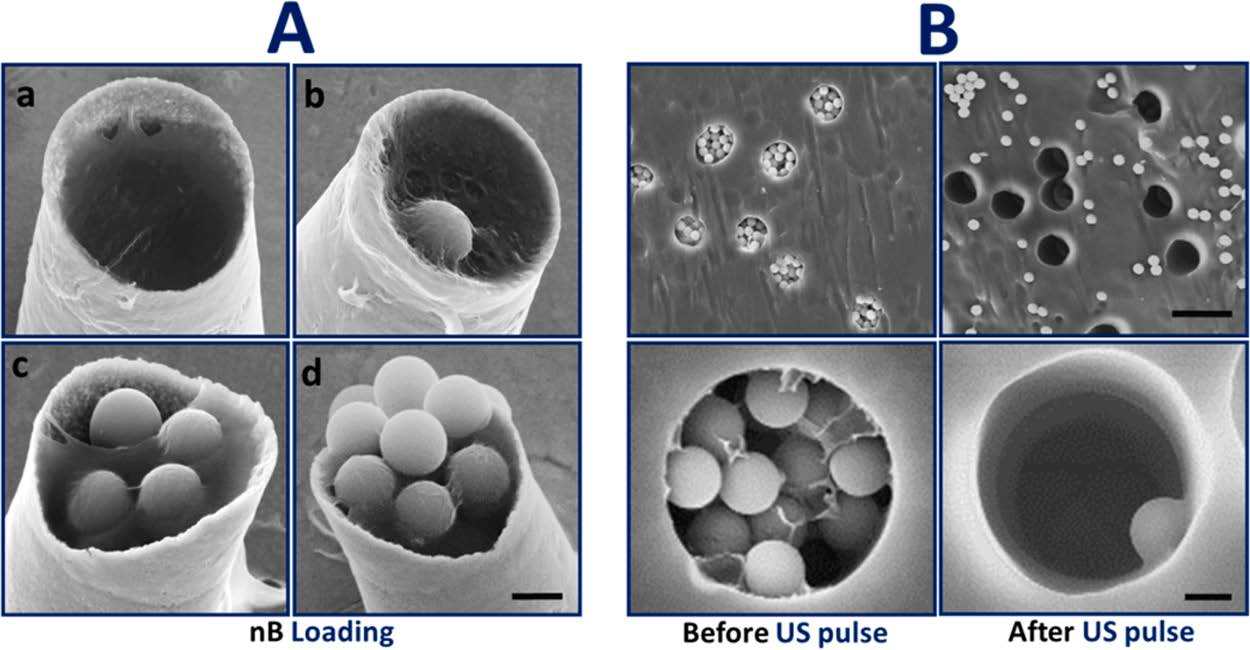This is Science: micron guns and nanocores

What comes to your mind when you hear the word "gun" ?! Probably something massive with great destructive power. But what if you hear the "micro-gun"? ...
Before the sunset of 2015, an extraordinary article was published in the prestigious scientific journal ACSNano. Yes, not just an article, but a whole incredible story about micro-guns and microballistics!
By tradition, Christmas is a fabulous time when everyone is waiting for something special and unusual. Apparently, the team of authors of the work, which will be discussed below, thought the same way and decided to publish her article exactly before Catholic Christmas.
But let's talk about everything in order. Scientists from Spain, Mexico and the United States have produced an array of conical "microguns" that are capable of firing "nanocores" with a diameter of 1 micrometer, which is a hundred times smaller than a human hair.
The micropowders themselves are made of graphene and gold and placed in a polymer carrier matrix (see the figure below). If desired, they can be released and transferred, for example, into a suspension by dissolving this polymer matrix. Instead of gunpowder, they use perfluorocarbons (perfluorocarbons, PFC), which under the influence of ultrasound effectively passes into a vaporous state. And then, as in an ordinary gun, the generated vapor pushes the spherical core (in this case, silicon dioxide).

(A) Micro-gun creation scheme. (B) The principle of operation of a microtunnel when exposed to ultrasound: PFC goes into steam and pushes nanonuclei. (C) Micro-gun before and after the shot. The scale mark is 20 microns.
In order to track the flight path of the nanonucleus, as well as to show the spread of "exhaust" gases, the nucleus and the "powder charge" from PFC were tinted with fluorescent paint. After a shot, fluorescent PFC vapor spreads over the surface of the substrate, and the nuclei fly off with a pretty decent speed of up to 40 m / s.
Video "shooting" can be viewed on the publisher's website .

Microphotographs of "stelb" with micron gun nanocores. (A) Top view. (B) Side view. Scale tag - 20 microns
In principle, such a gun can be loaded not only with one core, but with several at once - almost like a microscopic shotgun.

Images obtained using a scanning electron microscope: (A) loading a different number of nanonuclei, (B) a matrix with a micro-gun before (left) and after (right) a “shot” using ultrasound. Scale label - 1 micron
And finally, most importantly, it would seem how such a “toy” work could get on the pages of a respected publication ?! However, this question does not exist if we look at the scope of this “product” - the original drug delivery and cancer control system, for example. Indeed, today one of the main problems associated with the treatment of cancer is how to destroy the affected tissue and not affect the living. The answer is the use of such arrays of microguns or their suspensions. As the authors have noted, micropuns will be especially effective if they are equipped with a magnetic tip for aiming the gun at the target.
The original article, Acoustic Microcannons: Toward Advanced Microballistics, is published in ACSNano (DOI: 10.1021 / acsnano.5b07080 ).
A complete list of This is Science's published articles on GeekTimes:
This is Science: Simple and Cheap Solar Energy
This is Science: Graphene - Life or Death?
This is Science: Blow and Get Electricity
This is Science: Silicon Electronics: Bend Me All the Way!
This is Science: An elastic display on quantum dots.
This is Science: Putting triboelectricity at the service of humanity.
This is Science: 3D optical printing moves to the micro level.
This is Science: What's inside a neuromorphic chip?
This is Science: News from graphene fields
This is Science: 3D electronic lithography to the masses
This is Science: Alkaline battery discharge or why the battery bounces
This is Science: micro-guns and nanocores.
This is Science: wearable electronics and triboelectricity. Part 1
This is Science: Wearable Electronics and Triboelectricity. Part 2
Sometimes it is possible to read briefly, and sometimes not so much about the news of science and technology on my Telegram channel - we are welcome;)
